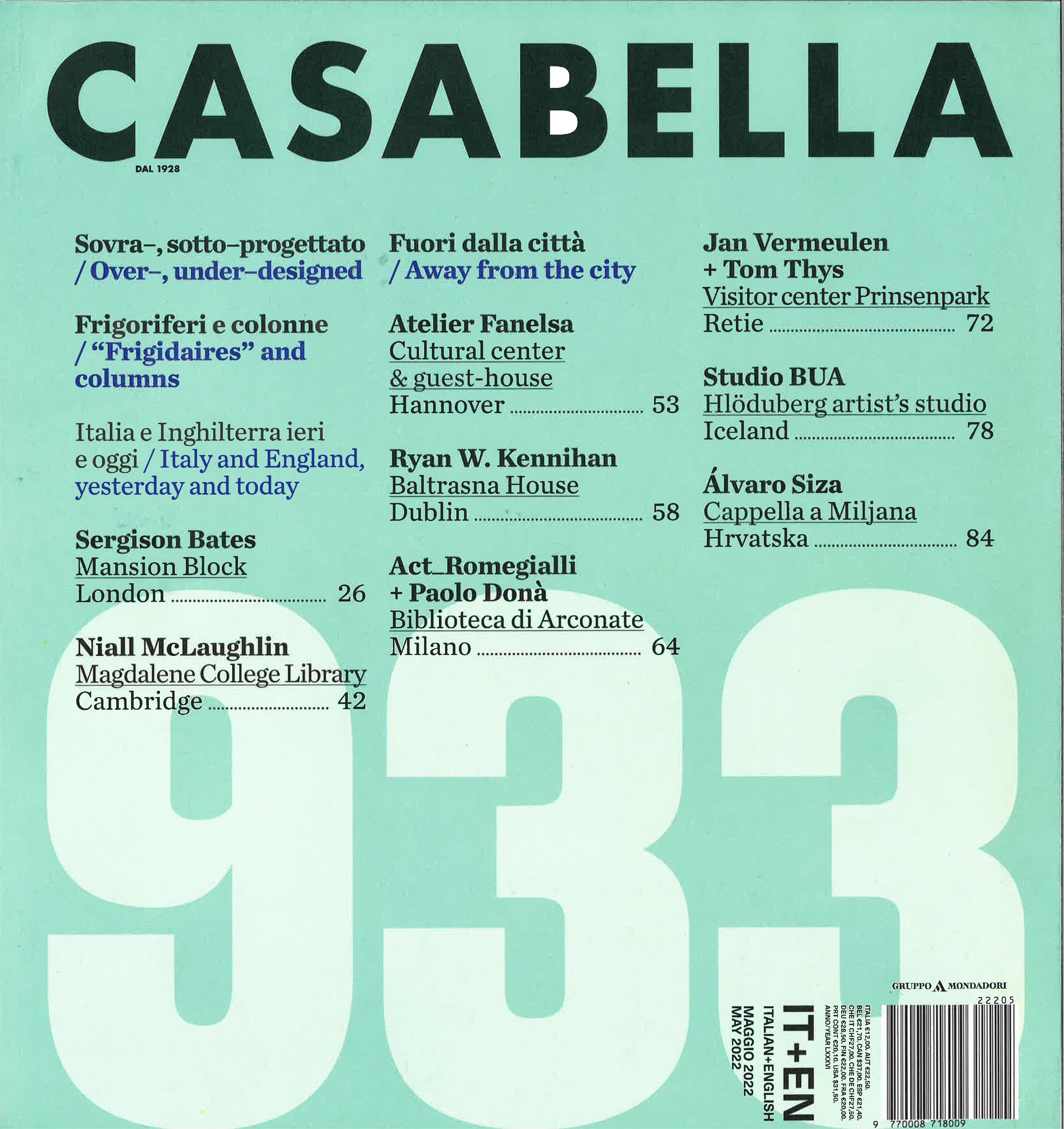Magdalene College Library - Casabella
May 2022
Text Massimo Curzi
Images Nick Kane
For architecture lovers, Cambridge is a must. Most of this architecture is connected with the context of the university, including student housing and the libraries of the individuai colleges. But the city also contains prize-winning residential buildings (see the Accordia complex by Maccreanor Lavington and Alison Brooks Architects) or small masterpieces such as the Kettle's Yard art gallery, the house-museum of Jim Ede. The new library establishes close bonds with the set of buildings that form the organization of the college, especially with the Pepys Library, which was built from 1670 to 1703 by arder of one of the school's most famous alumni, Samuel Pepys, an English politician and writer who contributed to bring renown to this institution, which has a particular character with respect to ali the other colleges of Cambridge.
Magdalene is known tor its firm commitment to the rules of tradition, so much so that the students stili dine by candlelight. Perhaps due to their monastic origin, all the buildings of Magdalene College are in brick, as opposed to the more widespread use of stone, the only exception being the main façade of the Pepys Library, clearly a reference far the design of the new library, given the composition of the façade and the volumetric shaping of the roofs. The new building is thus a perfect example of how to interpret a precise functional theme while preserving a compositional character perfectly "in tune" with a very vivid historical context. Once again in this case, Niall Mclaughlin has worked to obtain an extremely clear and rigorous plan, as well as a special section with a variety of individuai spaces -two or three stories in height- complying with the tenets of Sir John Soane. As in other projects, the concatenation of structural parts happens in a simple way, respecting the characteristics of the single materials, the supporting and supported elements, in close harmony between powerful portions in brick that support concrete architraves, which in turn sustain deck structures in timber or massive furnishings in solid oak such as parapets, tables and bookstands. Other "intelligent" details appear only at "second glance," like the pitches of the roofs that permit natural passive ventilation, the result of experiences trom the late 1800s that have almost been forgotten today.
